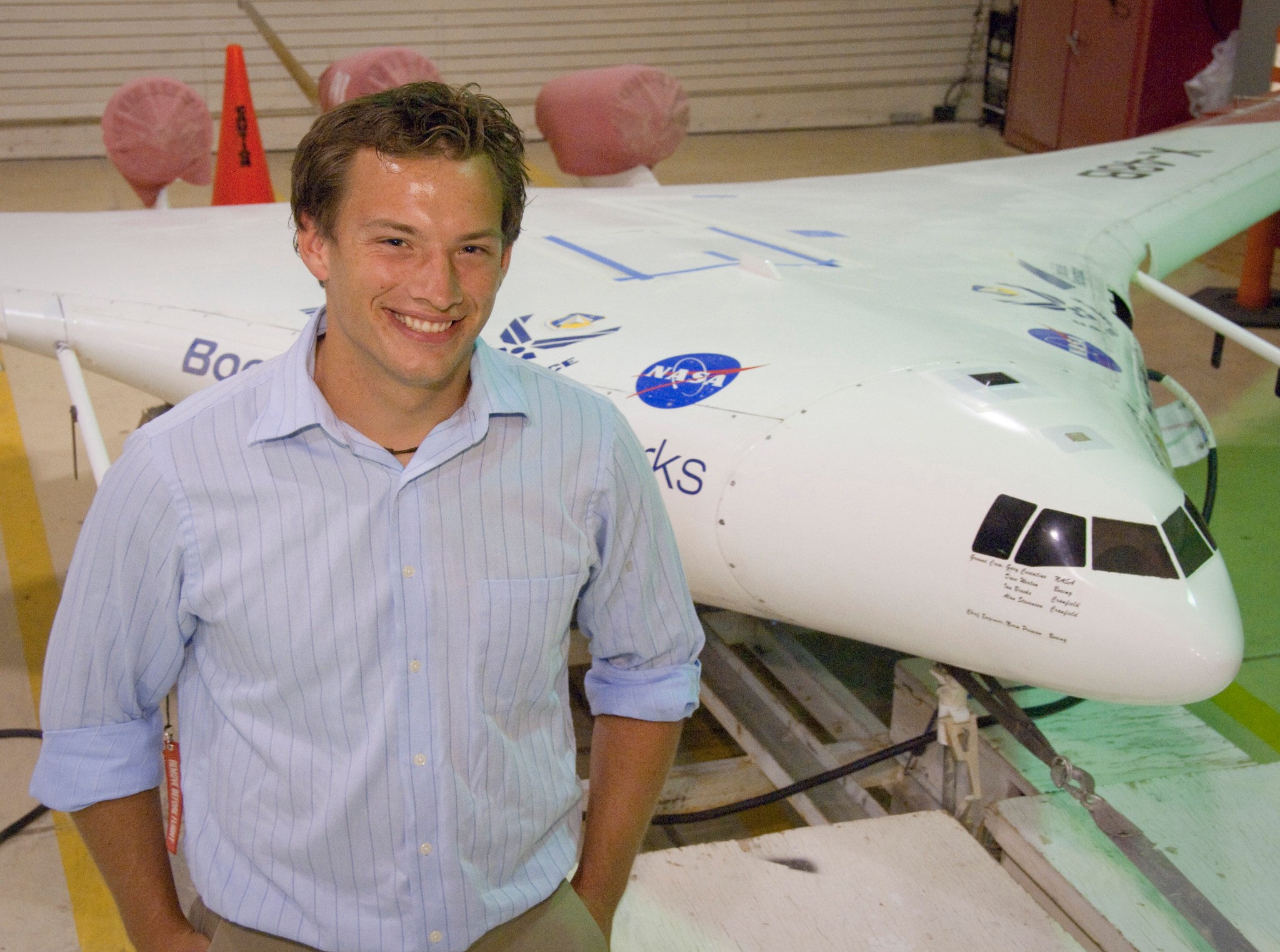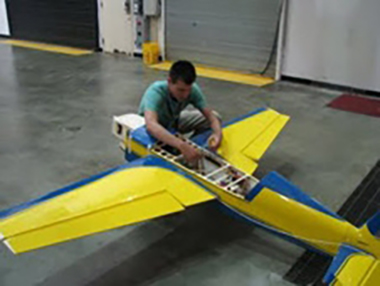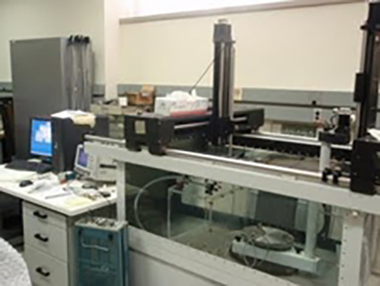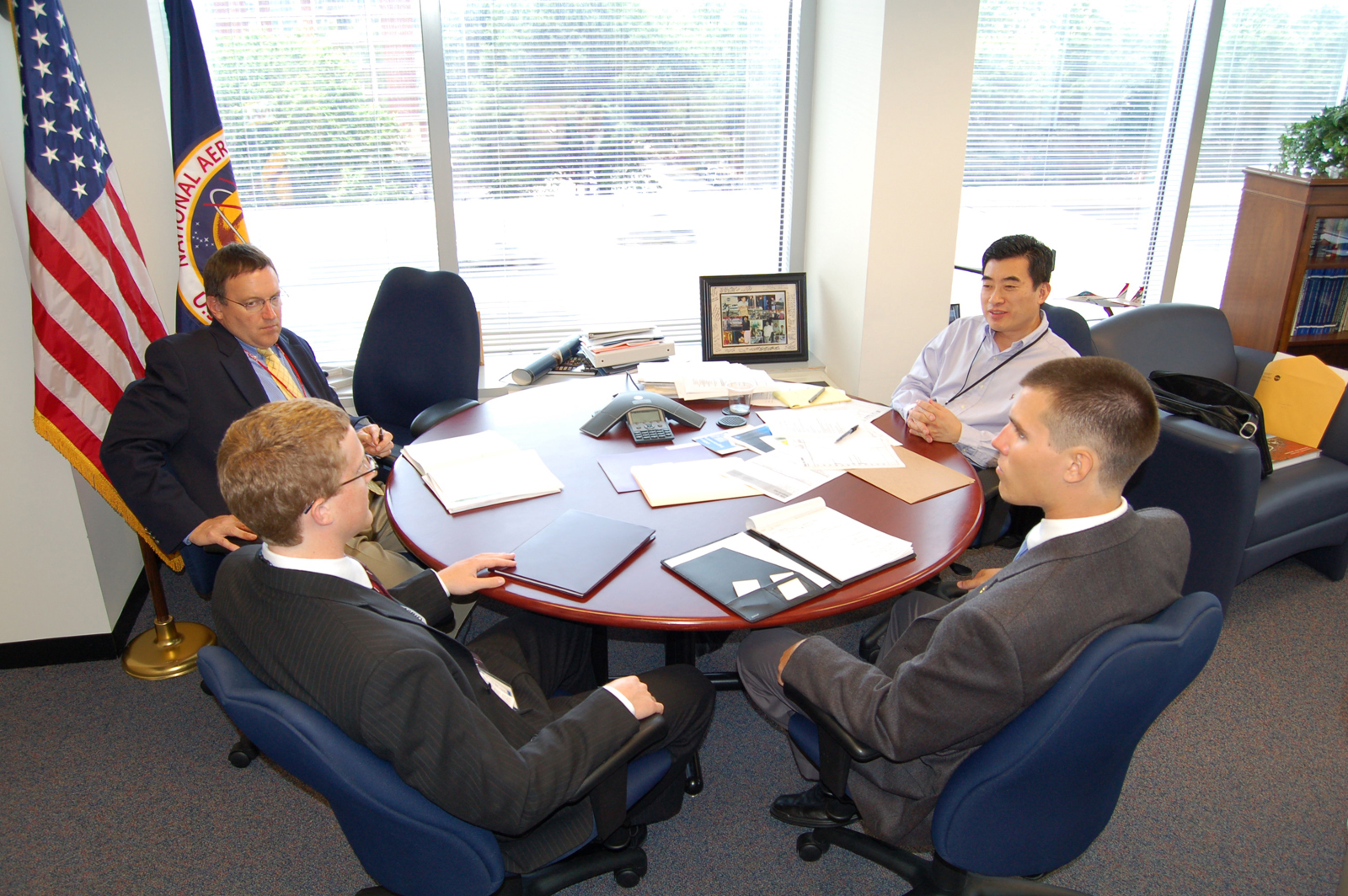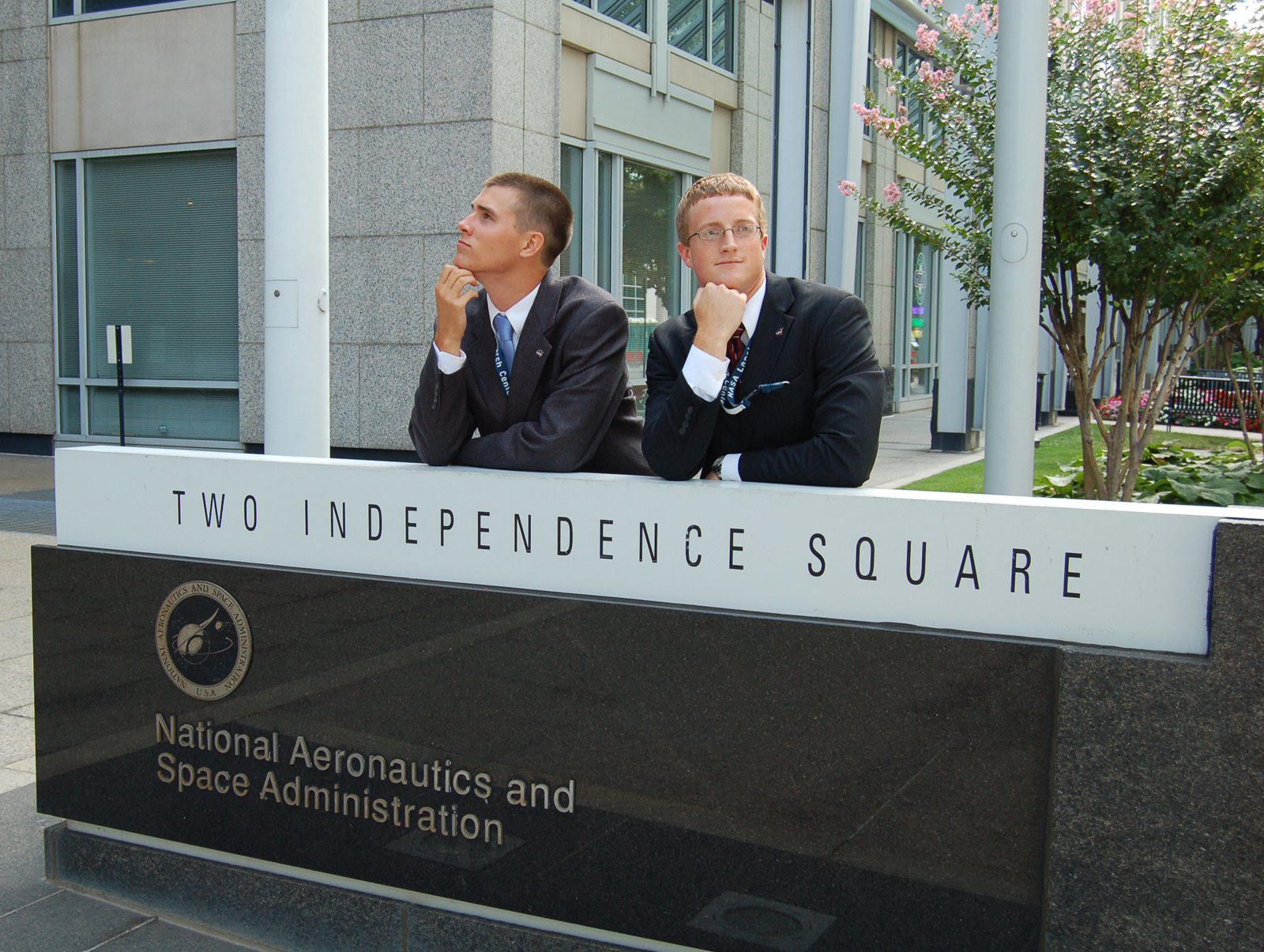What did you do during your summer vacation?
Greg Papp destroyed aircraft models-on purpose. Reid Berdanier used ultrasonic snoopers to look for cracks in aircraft materials. Eric Blood built a computer database to keep track of all the flight maneuvers of a future aircraft that looks like a flying manta ray.
All three young men were interns at different NASA research centers this summer. They also were recipients of the NASA Aeronautics Scholarship, which qualified them for the internship. They were paired with NASA researchers who served as their mentors during the internships.
Chat Live with Eric, Greg, Reid and Other NASA Summer Interns Sept. 24
Eric was assigned to NASA’s Dryden Flight Research Center, Edwards, Calif. A native of Webster, N.Y., Eric studies mechanical engineering at Carnegie Mellon University in Pittsburgh, Pa.
In eighth grade, he won a trip to U.S. Space Camp in Florida and saw a Saturn V rocket for the first time; its size in real life impressed him. “I made the connection from pre-school aircraft and space picture books to seeing something with my own eyes,” he said.
As an intern, Eric had that same experience. Over the summer at Dryden he built a database of the maneuvers used in more than 50 test flights since 2007 of Boeing’s X-48B blended wing body scale technology demonstrator aircraft. The 20-foot wingspan, remote-piloted scale model features a design where the wing blends into the vehicle’s body. Potential benefits of the design include reducing aircraft noise and emissions, and improving performance.
During the test flights, Eric studied the spin characteristics of the demonstrator and learned more about its stability, control and recovery qualities. “My ultimate goal is to fly what I design,” he said.
Reid and Greg were both assigned to NASA’s Langley Research Center in Hampton, Va. Reid, originally from Rapid City, S.D., is studying mechanical engineering at Syracuse University in New York. Greg, originally from Greenbelt, Md., is studying aerospace engineering, also at Syracuse University.
“I grew up next to Goddard Space Flight Center,” Greg said. “I love planes and if I could work with them to design them, that’d be great.” This summer Greg got his wish-in a way. He helped test a new sensor system that could be used to diagnose aircraft damage.
“We used these off-the-shelf airplane models and intentionally damaged them,” Greg explained. “We’d load an undamaged model and then take a hacksaw and cut half-way through and re-load it and note the difference in load strains. Or we’d fly the model in normal mode and then release a pre-set plug so there’d be a hole or a gash. Or we’d make something stick, like an aileron.” For Greg the most memorable experiment was a thrust test where the model was anchored and the engines run at full thrust. “The plane was a foot off the ground and the pictures were shaking on the walls,” he said.
Greg understands that the real revelations of the research are mathematical, not visual. “You’d know if something was wrong without actually seeing it,” he said. “We get the correlation measurements and apply them to models of larger size. It’s the structure modeling and mitigation algorithms that will help us down the road. There are tons of applications for this kind of technology.”
On the flip side, Reid studied ways to avoid damage in aircraft. At Langley’s Nondestructive Evaluation Sciences branch, he used a new technology to detect cracks or other damage in composite materials. (Composite materials are nonmetallic and often constructed from layers of laminates. They are used today in many parts of aircraft to help reduce weight. Some small aircraft are made entirely of composites.)
“It was probably one of the coolest things I’ve ever seen,” Reid said. “We’d scan the material with an ultrasonic transducer and see where the crack was or where the layers of laminate were coming apart.” Okay so far, but then Reid started talking like he’s already a professional NASA researcher: “I looked at the dependence of frequency, beam width, attenuation and I took the interdependence of those characteristics to design an array transducer configuration capable of interrogating textile-based composite materials that are woven or braided-very complex, much more than a layered laminate material.” Translator, please!
The work made another kind of impression on Reid. “This research is something my mentor has wanted to do for 15 years. Everything that’s happened in this effort, I’ve been involved with from the start,” he said proudly.
During their internship at Langley, Greg and Reid stayed at an apartment complex with other interns. “We had great experiences because all the interns were together,” Reid said.
“We’d meet a whole bunch of interns every day and take the biggest table at lunch,” Greg said. “It was fantastic.” Other favorite summer memories included touring the wind tunnels at Langley, seeing the F-22 military aircraft flying out of nearby Langley Air Force Base, and driving golf balls at the Air Force base right near the runway where those F-22s would land.
Greg and Reid also took a road trip to NASA’s Headquarters in Washington. “It wasn’t far and we ended up having a great experience,” they said. For two days they shadowed men and women working in NASA’s Aeronautics Research Mission Directorate.
“People stay at NASA because they are committed, and that’s a testament to the agency,” Greg said. “It’s not because they’re stuck there; it’s because they want to be there. There’s a sense of something greater; that your contribution could affect all aspects of aeronautics or it could end up on the space shuttle. It all matters.”
Reid has started to really understand how to do research. “You collect data, analyze and interpret it and try to figure out what’s going on. And that first set of data probably won’t be great,” he said. “So you do it again and it’s better. But then you have to do it again. My internship mentor [at Langley] told me that the data you end up using and reporting will probably be what you take the very last week you’re here. And he was right. The graphs I used in my final report were the ones I did just one day before.”
What’s next? Greg’s ultimate goal is to be an astronaut. “It’s not just a little kid’s dream,” he said. “It’s a real opportunity. Someone in the current class of astronauts told me, every career move I make, I should keep that goal in mind. And I am.”
Reid is looking to graduate school. “NASA is definitely in the cards. I’m going to try to do an internship at another NASA facility and apply to some graduate fellowships through NASA including the graduate form of the aeronautics scholarship,” he said. “At this point I’m realizing how much NASA has to offer for the future. NASA wants to help people and I want to be helped.”






























